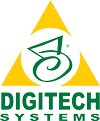You’ve heard the term “accounts payable automation” but maybe told yourself it must be complex or only for larger organizations. The reality is the opposite. Accounts payable (AP) automation—also known as automated invoice processing—is cost-effective and simple for any size business, offering benefits that include significant savings of time and money, take a moment to learn how we make AP automation easy.
Did you know as much of 70% of invoice processing costs are related to manual data entry and document handling, according to Institute of Finance Management research? AP automation puts an end to those costs. No changes are required of your suppliers. Our technology recognizes, extracts and securely processes data from both paper and electronic invoices no matter the page layout or file type.
We want to demonstrate you how easy life could be when implementing the right solution for your AP department.
A before and after look at accounts payable workflows
Here’s how most manual accounts payable processes work:
- The Accounts Payable Clerk receives invoices by mail and email.
- The Clerks then prints any emailed invoices and types the invoice data into the accounting application.
- The AP clerk then compares the invoice details against the paper purchase order and inventory receipt to ensure the company got what they ordered before payment is processed. (usually referred to as a 3-way match)
- Incorrect information is clarified and updated, often requiring new paperwork to be created and sent.
- The invoices are then hand delivered to the manager for approval and returned to the AP clerk.
- Next, the invoice is placed on the desk of the Chief Financial Officer (CFO) for approval and signature. If the CFO has any questions, the Clerk may be asked to retrieve related paperwork.
- Once approved, the invoice is returned to the AP clerk, who marks the invoice as approved, files it for physical storage, and then issues a check to the supplier.
- The AP clerk returns to the accounting application to mark the invoice as paid and processed.
Your Path to Automation
Compare that to the ease, efficiency and security of an automated accounts payable system. These are the five basic steps of AP automation:
- Scan: Paper invoices are converted into secure digital invoices.
- Index: The digitized invoices—along with invoices delivered electronically—are sorted and critical data is automatically extracted and entered in the content management system as well as the accounting application.
- Reconcile: The data and images of the original invoices, purchase orders and inventory receipts are readily available to be viewed side-by-side for electronic matching.
- Remit: The digitized invoices are automatically routed for electronic reviews and approvals using eSignatures.
- Retain: The digitized invoices are securely stored for as long as needed using the system’s automated document retention features.
”We have been able to increase the visibility of what is going on in the AP department. The AP processing services have helped automate workflow and provide company-wide consistency and control.” - Tyler R. Nelson, Cash Manager and AP Supervisor, Prestige Care Inc.
Sample Workflow: AP Automation
This diagram should help you visualize how invoice processing can be automated, and it will give you a basic template to customize to your own unique situation.
Get started right away
As you consider your company’s AP automation needs, we invite you to contact us to learn how to get up and running right away or to learn more about the benefits of the PaperVision suite of content management services.
Want to see accounts payable automation in action? Contact us to set up a free online demonstration. Our sales team will work with you to meet your unique needs. For more than 25 years, we’ve helped organizations of all sizes with digitization, workflow automation and other information management needs.
Related Posts
- Request a free demo of our software to see how you can apply ECM and automation to your business.
- Learn more about PaperVision Enterprise WorkFlow and see what else it can do to increase efficiency and productivity.
- PaperVision Forms Magic Technology automatically extracts and classifies data from scanned documents. See how you can eliminate manual data entry with Forms Magic.
- See how Real Property Management Vancouver was able to streamline processes and improve customer relationships with the PaperVision® product suite.
- Cooperative Educational Services (CES) was able to save over $111,000 annually by digitizing and automating their procurement processes.

Contact Info
+1 866.374.3569
Email Support
Email Sales
Daily: 8:00 am - 6:00 pm CST/CDT
Saturday & Sunday: Closed